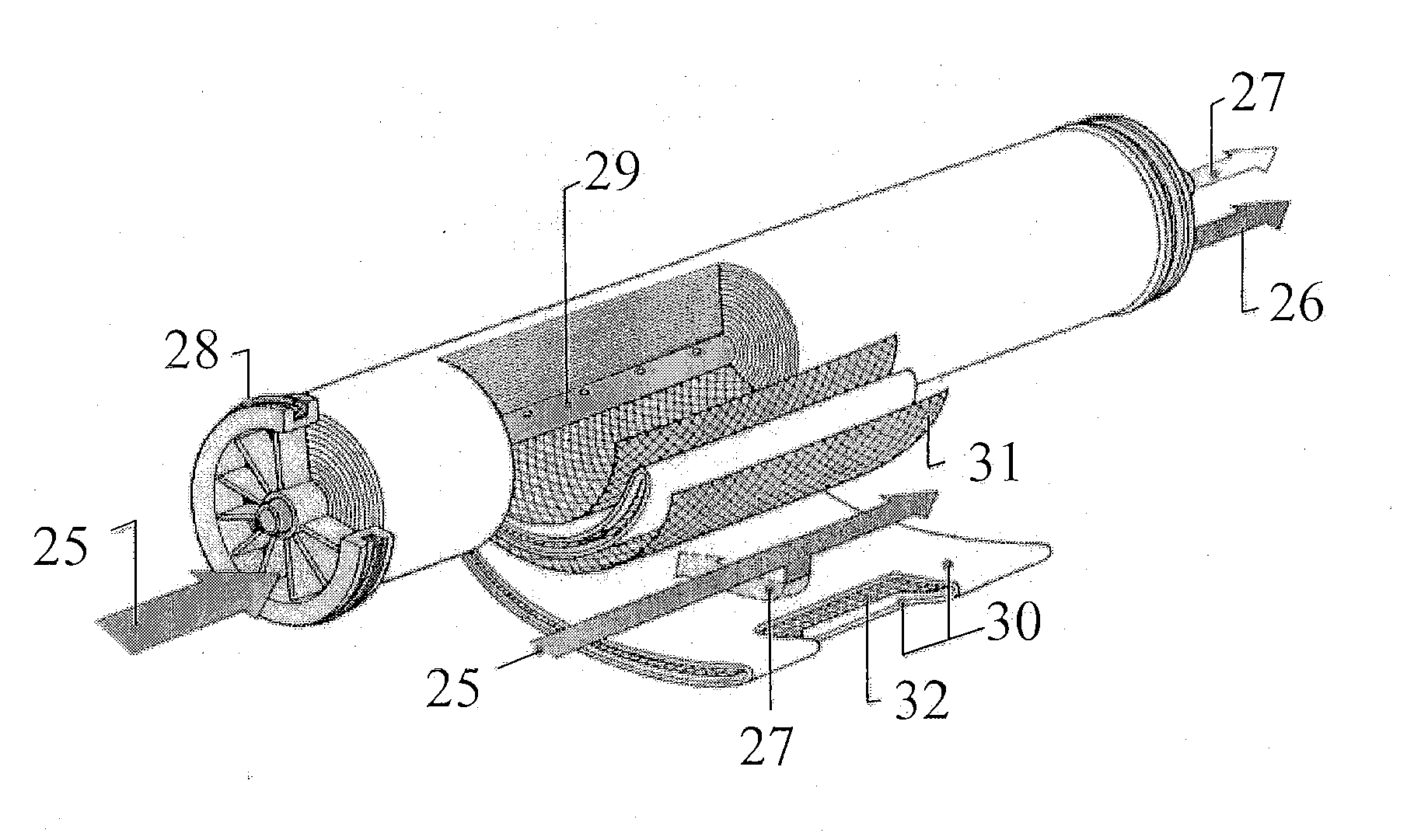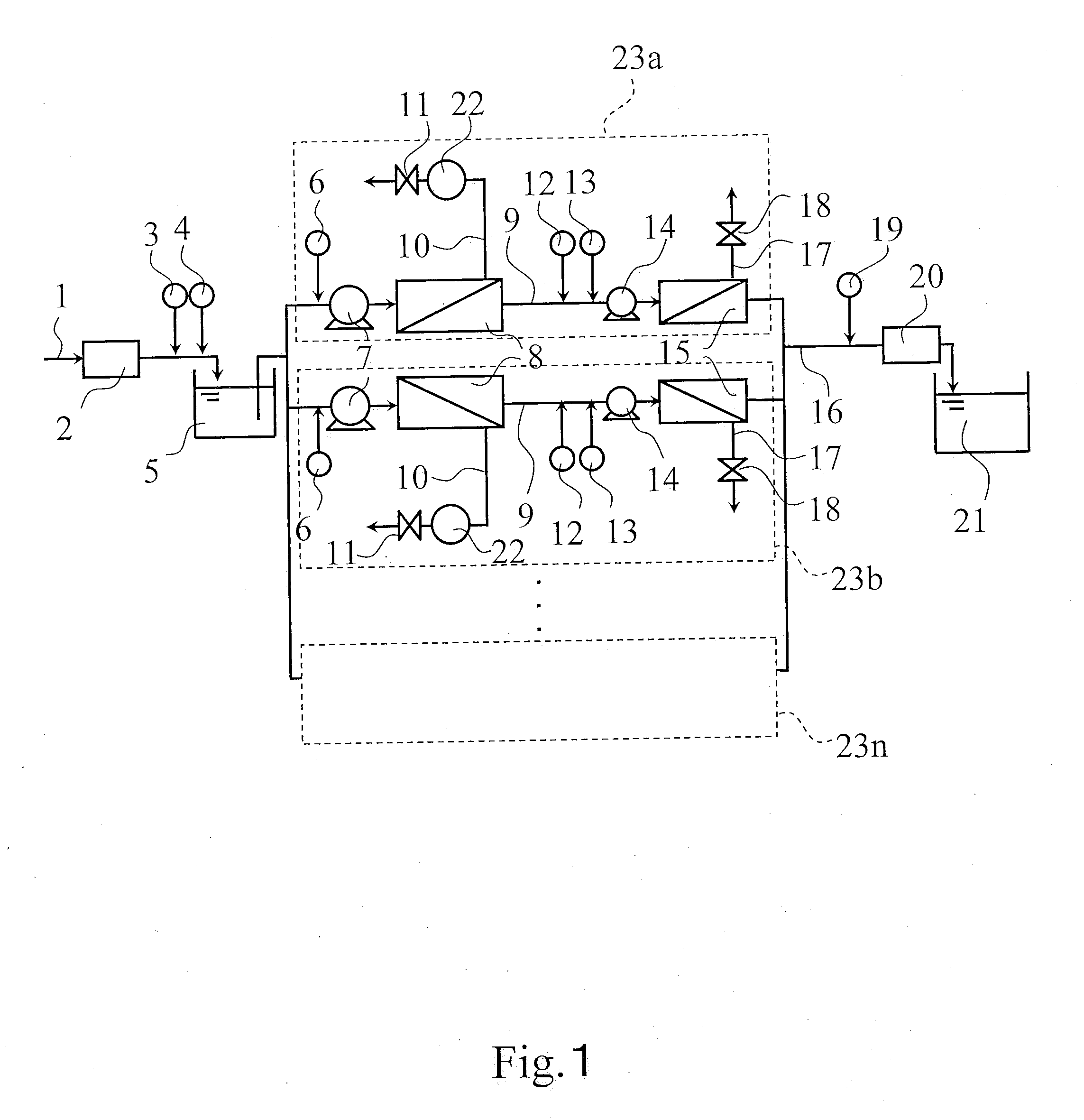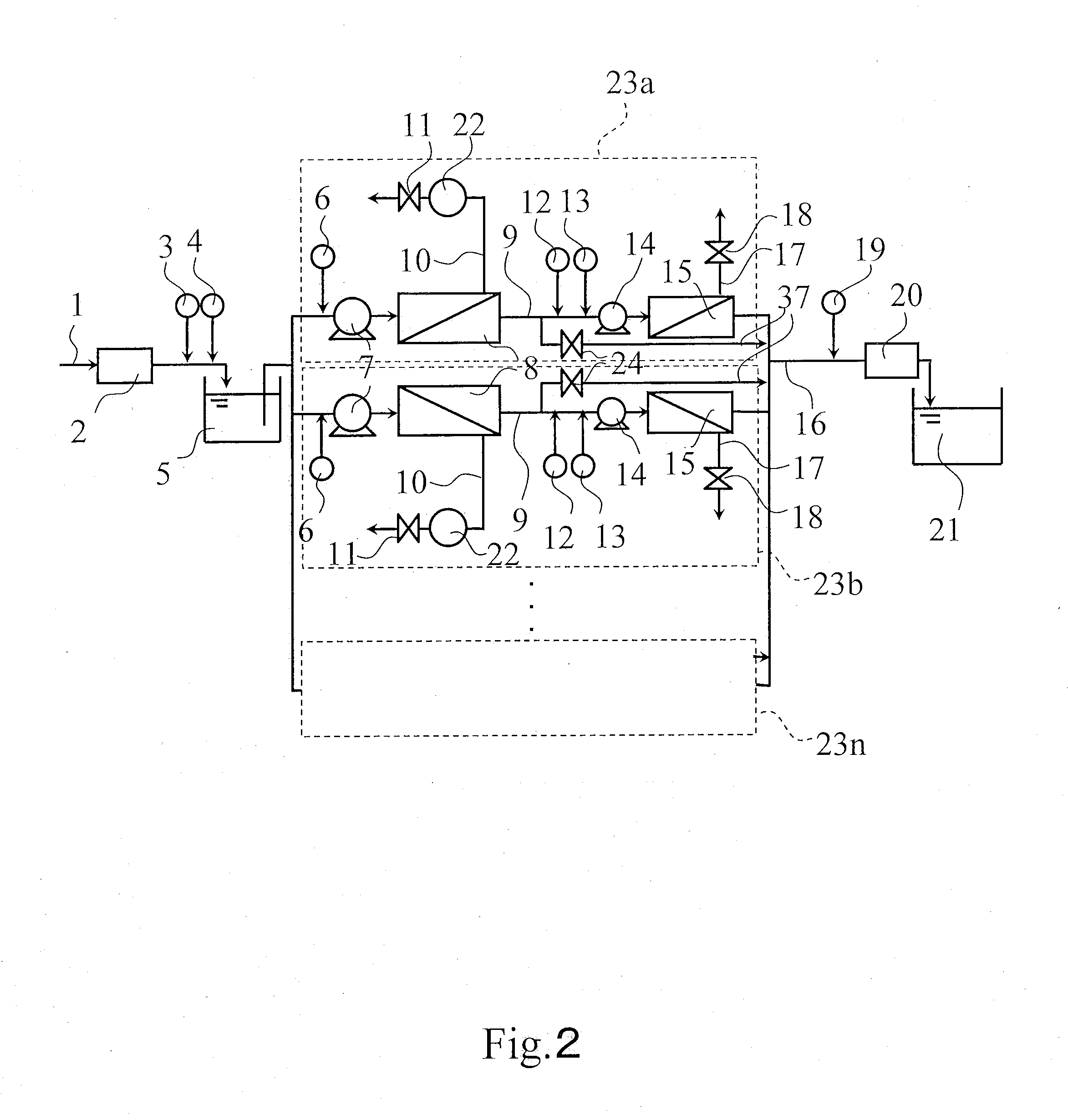Method for producing fresh water
a technology of fresh water and water supply, applied in the direction of reverse osmosis, membranes, separation processes, etc., can solve the problems of affecting the quality of fresh water, and avoiding trouble, so as to improve the quality of water. , the effect of reducing the concentration of boron
- Summary
- Abstract
- Description
- Claims
- Application Information
AI Technical Summary
Benefits of technology
Problems solved by technology
Method used
Image
Examples
reference example 1
[0168]As an ordinary operation, seawater near an Ehime factory of Toray Industries Inc. was pre-treated by sand filtration to remove suspended solids, and the pre-treated seawater (TDS concentration 3.4% by weight, water temperature 22° C., pH=7.5) was treated by flow volume 80 m3 / day using apparatus X. As a membrane element of a first semi-permeable membrane unit, SU-810 manufactured by Toray Industries Inc. was used; as a membrane element of a second semi-permeable membrane unit, SU-710 manufactured by Toray Industries Inc. was used. The operation was done by a recovery factor of 30% in the first semi-permeable membrane unit, and a recovery factor of 75% in the second semi-permeable membrane unit. Additionally, there was no dosing of scale inhibitor by a first dosing device of scale inhibitor 3, no dosing of alkali by a first dosing device of alkali 4, and no dosing of acid by a dosing device of acid 6. However, to improve boron rejection performance in the second semi-permeable m...
reference example 2
[0169]As a washing operation, the operation was done in the same condition as in Reference example 1 except that sulfuric acid was added by a dosing device of acid 6 before a first semi-permeable membrane unit 8, pH of feed water to the first semi-permeable membrane unit 8 was set to 3.0, there was no dosing of scale inhibitor by a second dosing device of scale inhibitor 12 before a second semi-permeable membrane unit 15, and no dosing of alkali by a second dosing device of alkali 13. As a result, the permeate flow volume was 18 m3 / day, permeate TDS concentration was 1.5 mg / l, boron concentration was 0.25 mg / l, and pH of permeate was 4.5. In this case, the dosing amount of sulfuric acid in the dosing device of acid 6 was 530 g / hr, and the dosing amount of NaOH in the second dosing device of alkali was 0 g / day.
reference example 3
[0170]As a washing operation, the operation was done in the same condition as in Reference example 1 except that sulfuric acid was added by a dosing device of acid 6 before a first semi-permeable membrane unit 8, pH of feed water to the first semi-permeable membrane unit 8 was set to 3.0. As a result, the permeate flow volume was 18 m3 / day, permeate TDS concentration was 1.1 mg / l, boron concentration was 0.19 mg / l, and pH of permeate was 9.2. In this case, the dosing amount of sulfuric acid in the dosing device of acid 6 was 530 g / hr, and the dosing amount of NaOH in the second dosing device of alkali was 120 g / hr.
PUM
| Property | Measurement | Unit |
|---|---|---|
| pH | aaaaa | aaaaa |
| pressure | aaaaa | aaaaa |
| pressure | aaaaa | aaaaa |
Abstract
Description
Claims
Application Information
 Login to View More
Login to View More - R&D
- Intellectual Property
- Life Sciences
- Materials
- Tech Scout
- Unparalleled Data Quality
- Higher Quality Content
- 60% Fewer Hallucinations
Browse by: Latest US Patents, China's latest patents, Technical Efficacy Thesaurus, Application Domain, Technology Topic, Popular Technical Reports.
© 2025 PatSnap. All rights reserved.Legal|Privacy policy|Modern Slavery Act Transparency Statement|Sitemap|About US| Contact US: help@patsnap.com



